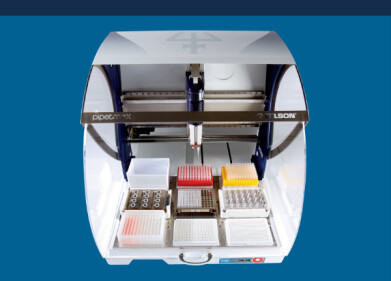Laboratory Products
5 Types of Laboratory Hazards
Apr 20 2021
While laboratories are generally considered safe workplaces, hazard exposure is exceptionally high. To ensure the safety of themselves and others, personnel must adhere to strict guidelines when coming into contact with hazardous materials. Below, we take a look at some of the most common types of laboratory hazards and how they’re managed.
Infectious diseases
Infectious diseases and viruses, particularly those with high R0 ratings, are considered major hazards. When handling these types of pathogens laboratories must comply with strict health and safety protocols, often enforced by government agencies. For example, in the United States all laboratories experimenting with genuine samples of coronavirus must have Biosafety Level 3 certification and be equipped with special airflow systems and sterilisation equipment.
Corrosive chemicals
Hydrochloric acid, sodium hydroxide, imidazole and bromine are all highly corrosive chemicals that can cause serious damage if they come into contact with the skin or eyes. To minimise the risks associated with handling corrosive chemicals laboratories enforce strict labelling and storage protocols. Personnel are also required to wear adequate PPE, including gloves and safety glasses, when handling corrosive chemicals.
Flammable materials
While useful, materials such as methanol, ethanol, acetone and hexane are highly flammable and should always be treated with caution. The use of open flames in laboratories should always be closely monitored, especially in the presence of flammable solvents. In addition to flammable materials, laboratories must also be wary of pyrophoric substances that can spontaneously ignite when exposed to oxygen, without the need for an open flame. This includes alkali metals, white phosphorus and lithium aluminium hydride.
Mercury
Used in glass thermometers and barometers, mercury is a common chemical in laboratories but needs to be handled with care as it is also a major health and safety hazard. Inhalation of mercury vapours can damage the digestive, immune and nervous systems and in a worst case scenario result in fatality.
Laboratory waste
All laboratories handling hazardous materials should have robust, government-approved waste disposal strategies in place. This ensures that hazards are not only mitigated inside the laboratory, but also when they exit the controlled environment.
From flammable liquids to infectious disease samples, Bio Safety Cabinets (BSCs) are an essential laboratory product when it comes to containing hazards in a laboratory setting. Not only do they safeguard personnel against pathogens, infectious agents and biohazards by filtering inflow and exhaust air, but they help maintain the integrity of materials. Direct contact with hazardous materials means BSCs require a specialised approach to sterilisation. VÍctor Lázaro from Azbil Telstar Technologies S.L.U. explores the topic further in ‘Decontamination Methods for Bio Safety Cabinets.’
Digital Edition
ILM 49.5 July
July 2024
Chromatography Articles - Understanding PFAS: Analysis and Implications Mass Spectrometry & Spectroscopy Articles - MS detection of Alzheimer’s blood-based biomarkers LIMS - Essent...
View all digital editions
Events
ACS National Meeting - Fall 2024
Aug 18 2024 Denver, CO, USA
Aug 25 2024 Copenhagen, Denmark
Aug 28 2024 Phnom Penh, Cambodia
Sep 04 2024 Chiba, Tokyo, Japan
Sep 04 2024 University of Warwick, Coventry, UK











24_06.jpg)






